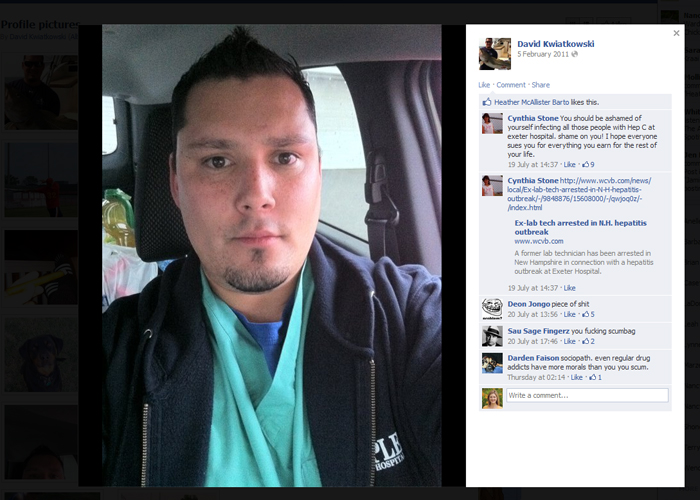When People Fail
/ I am personally struggling with two pieces of information today. The first is that Lance Armstrong has come clean with Oprah about his doping scandal. I had hoped that it was all fabricated by those who were jealous, but alas he is guilty. I cannot even understand why the leagues (baseball, biking etc...) don't realize that the cost of winning is at ALL costs. Why not just make these substances all legal and do away with that aspect of what we are capable of doing on our own. This is 2013. I would say at this point most sports has seen their very best without enhancement. What is left? Enhancement.
I know that seems bizarre for a pharmacist to say publicly that doping for sports should be made legal, but that is what I am saying. As long as it stays illegal, the coaches and trainers and others involved in making the best of the best will go at all lengths to find substances that are not yet known or tested and continue to dope. It is inevitable.
I am personally struggling with two pieces of information today. The first is that Lance Armstrong has come clean with Oprah about his doping scandal. I had hoped that it was all fabricated by those who were jealous, but alas he is guilty. I cannot even understand why the leagues (baseball, biking etc...) don't realize that the cost of winning is at ALL costs. Why not just make these substances all legal and do away with that aspect of what we are capable of doing on our own. This is 2013. I would say at this point most sports has seen their very best without enhancement. What is left? Enhancement.
I know that seems bizarre for a pharmacist to say publicly that doping for sports should be made legal, but that is what I am saying. As long as it stays illegal, the coaches and trainers and others involved in making the best of the best will go at all lengths to find substances that are not yet known or tested and continue to dope. It is inevitable.
The other piece of information that I am struggling with today is that a former classmate in pharmacy school (who I will call Ed for his own privacy) has made a deal in pleading guilty in a case that I have had a hard time understanding.
You see, Ed was the type of student in our class who was a man of character. He was one of the good guys. I believe he was already married and was in the pharmacy fraternity that was more studious and less partying. You can imagine that I was in the partying one and you would imagine right. Ed has a large family now; he has small children and a wife that need him.
Ed has had some legal trouble in which there was some sort of federal charge brought against him for distributing controlled substance (Oxycontin) from his pharmacy. I don't know how this whole thing began, but apparently it began fairly innocent enough with perhaps one bad decision or perhaps another part of the story that I do not know. Maybe it was driven by needing money. Perhaps it was driven by a bad decision further snowballing into extortion by some drug addicted criminals.
Either way, Ed is going to likely go to prison for around five years or so, and my heart breaks for him.
I know that it is easy for many to condemn a man like Lance Armstrong for doping but the bigger offense being the lies he told over the years and nastiness that ensued. He threatened, sued and was a bully for the most part. He "beat" cancer of the brain metastasized from testicular cancer, and he founded Livestrong. There was good to the fame and notoriety even if he came by it by cheating. Does the means justify the end? Sometimes?
Fifteen years ago I would have looked at both men making bad decisions and would have spewed my opinion, and it would have been quite judgmental. I tend to not do that as much because the situation is much more complicated the older I get. You see, people fail. People are human - even the most trusted professional, the pharmacist. The moment that I believe that I am infallible of filling will be the moment where I am the most vulnerable. We must always strive to do our best. Do not compromise even for a moment the integrity and good name you have. It is all you have in the way of public opinion, and in the case of Ed, I was a little saddened to read that he has struck a deal with the government about pleading guilty to one count and going to prison. He will be sentenced right before this summer, and I dread it for him and his sweet wife and children.
I do hope for a silver lining for Lance Armstrong somehow. I hope that he is able to look back at his life and see his own shortcomings and how they shaped him into something even better. Yes, he made a mistake and turned that mistake into a snowball of lies and more denials that took years for him to admit, but there are good things that he has done.
My friend made a mistake and is going to pay the consequence for it by missing five years of his children's lives. Both of them still are men I can admire for good things in the past and I hope even better things in the future. Somehow.






 CLEVELAND — Former pharmacist Eric Cropp was found guilty of involuntary manslaughter Wednesday in the death of a 2-year-old girl killed by a lethal injection of a salt solution during a cancer treatment.
CLEVELAND — Former pharmacist Eric Cropp was found guilty of involuntary manslaughter Wednesday in the death of a 2-year-old girl killed by a lethal injection of a salt solution during a cancer treatment.